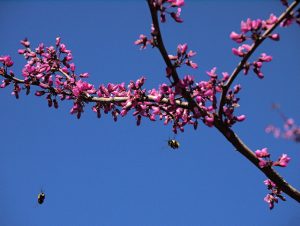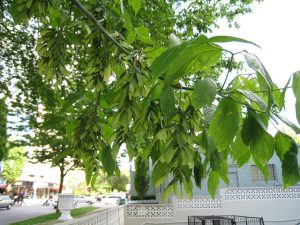We’ve all seen it through our windows: our neighbor is pruning his trees at a random time of the year, and we aren’t sure, but we don’t think that what he’s doing is actually best for the tree. Then you’ve seen someone trying to prune their trees using a chair, a saw that is dull, or even a kitchen knife (we’ve seen it all!). Pruning your trees isn’t easy, but it doesn’t have to be hard either.
Instead, you can learn about how to prune your trees and, sometimes more importantly, when to prune your trees. Each tree will have a different time that is appropriate to prune, especially in California where the climate and weather dictate a lot about our pruning and tree care habits.
While every tree will have a different base time, let’s look at some of the most common trees in Southern California and when you should prune them:
5. Arizona Ash: Late February
- Remove Dead or Dying Branches First
- Use Professional Grade Tools
- Remove Cross Branches
Pruning an Arizona Ash tree properly will result in a longer lifespan for these trees, which don’t live all that long. It can nearly double the lifetime of your tree if done regularly and by someone who knows what to do.
According to Garden Guides, “Removal of a large amount of unnecessary branches every year will prevent the Arizona ash tree from breaking when fully grown.” It will also help to improve airflow in your tree, which can keep it free from pests and infections.
Make sure to be aware of the animals that can make nests in this tree – try to avoid ruining their homes, if at all possible.
If you maintain the health of this tree, you will be able to do less and less pruning as the years grow by. You’ll still want to check for leaders and sprouts on a regular basis.
4. Catalina Cherry Tree: Varies Depending on Growth
- Prune Frequently Early
- Prune At Different Times of the Year
- Prune Less and Less As Tree Ages
Pruning your Catalina Cherry Tree early will help you to establish a healthy tree with a single leader, something very important if you want high production levels and a tree that lasts a long time. As the tree ages, you’ll have to prune less and less.
Cloud Mountain Farm Center explains how and when to prune: “As these main leaders grow in early summer, make a heading cut into the main leaders every 2 or 2 1/2 feet . Or if the branches have grown this distance by August 1 (or any time before then), pinch out the terminal bud. Continue to do this until the shoot produces several side shoots. Then let the shoot grow another 2 feet or so and repeat the process. If these shoots are not growing vigorously then it is better to wait and dormant prune these shoots. You don’t want any more than four uprights.”
3. Western Redbud: Winter or After Blooming
- Try Not to Prune First Few Years
- Fifth Year is the Best Time to Prune
- Sterilize Tools if Possible
If you can at all avoid it, allow your Western Redbud to go wild for the first few years until it has been established. Most people advise five years, but if you can go longer than that, try to. You really don’t need to prune much off this tree even when you do prune it in the early years.
However, you do have a very small window of time in which you can prune these trees – in the winter or right after the trees bloom. Other than that, the only reason to prune is diseased. Even if you see dead wood, do not prune the tree until the appropriate time.
According to the US Department of Agriculture, prune only to “remove suckers, crossed branches that may injure others and to maintain a rounded shape on a mature tree.”
2. California Box Elder: Summer
- Be Careful About Pruning Too Much
- Do Not Prune in the Winter
If you do plant a Box Elder tree, you know all of the risks that come along with it – including the pests. You cannot prune to remove these pests most of the time. Instead, you should prune to keep your tree in shape and to remove any dead branches.
Pruning this tree early can allow you to shape the tree for the rest of its life. You can train it into a single or a double trunk through pruning. As it gets older, you will have to do fewer trims, but make sure to remove any low hanging branches.
A variegated Box Elder needs to be pruned more than any other, because any green branches that aren’t pruned will revert the tree to its green self, according to The Garden Lady.
One of the most common reasons people do prune this tree is to move the limbs away from power lines, but it is recommended that you allow professionals to do this.
1. Saucer Magnolia: After Flowering
- Only Prune When Necessary
- Completely Disinfect Tools
- Do Not Rip Branches
Pruning branches of the Magnolia tree is a difficult task. You have to use the right tools and prune exactly right. Never rip or pull the bark, as this will damage the tree, sometimes permanently.
The Spruce points out that you absolutely have to be careful when you prune Magnolia trees because they don’t heal nearly as well as other types of trees. If you do trim, be careful that you don’t do any damage.
If you love the flowers on the Magnolia tree, be careful about pruning, especially if the flowers bloomed late. You may completely eliminate blooms for the next year, blooms you can’t get back.
It is difficult to grow trees in California, especially within the last few years. It is your best bet to keep the trees that you already have alive and thriving. You have to be careful when pruning because one wrong cut can spell the end of a tree – or at least the start of some pretty severe problems.
If you are worried, have questions, or want professionals to handle your tree concerns, give Econo Tree Service a call at (650) 200-2495. Our team is filled with experienced arborists and tree care professionals who can work with your trees to have your yard looking shapely and beautiful.






